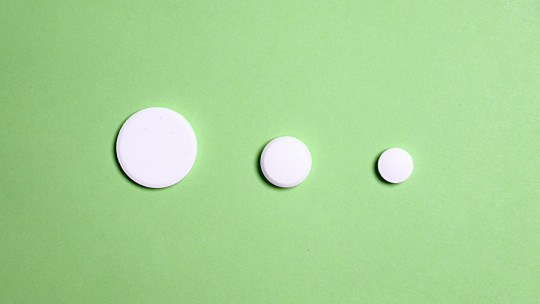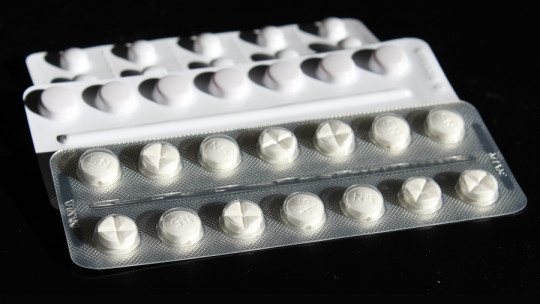
How many sedatives are there? This question has many answers depending on what we consider a sedative.
If our definition of a sedative is any medication made specifically for sleep, calming or calming, barbiturates and benzodiazepines would be the drugs that best represent this group.
However, if we also include drugs that have sedative effects, both secondary and therapeutic, the list of types of sedatives it becomes more extensive.
Next we will see which drugs induce sedation to a greater or lesser extent.
The main types of sedatives (classified and explained)
Sedative drugs are those medications that induce sedative, tranquilizing and hypnotic effects
Depending on which classification is consulted, some consider that sedative drugs are mainly barbiturates, although if we look at the effects of various psychotropic drugs we can also consider that there are antidepressants, antipsychotics and natural remedies that would fall into the category of sedatives.
Basically, Any drug that induces any depressant effect on the central nervous system can be considered a sedative, tranquilizer, or hypnotic medication
Throughout this article we are going to see which medications have sedative effects and, therefore, could be considered as belonging to the category or, at least, be considered as such.
1. Barbiturates
Barbiturates are a group of drugs derived from a substance known as barbituric acid Its sedative power on the central nervous system is well known, this being one of its main uses. The intensity of its effects varies greatly depending on the substance and the amount used, and can range from mild sedation to more powerful anesthesia. Because of this, they are prescribed as powerful anxiolytics, hypnotics and anticonvulsants and sometimes as pain relievers.
Since they are drugs with a high potential for addiction and can cause death due to overdose, barbiturates have been replaced by benzodiazepines in routine medical practice for problems such as anxiety and insomnia. However, there is still use of barbiturates, being used in general anesthesia, epilepsy and, in some countries, assisted suicide.
Among the barbiturates we find:

2. Benzodiazepines
Benzodiazepines are substances whose chemical structure is composed of a benzene ring, which joins another seven-membered heterocyclic ring known as a diazepine. These medications have sedative, hypnotic, anxiolytic, anticonvulsant, relaxing and amnestic effects
Thanks to their versatility and safer drugs than barbiturates, benzodiazepines are commonly used in the therapy of anxiety and insomnia, as well as other problems such as epilepsy, alcohol withdrawal and muscle spasms.
These drugs They are used to calm the mood of people who have abused psychostimulants, in addition to treating panic states caused by poisoning with hallucinogens They are also used in invasive procedures such as endoscopy or dental interventions, especially when the patient shows anxiety before the intervention.
Among benzodiazepines we have:
3. Antidepressants
Although antidepressants are known to be the main option in the pharmacological treatment of depression, it is true that some have sedative effects both as a desired effect when addressing an anxiety disorder or some type of psychiatric condition in which the individual is overexcited, or in the form of an unwanted side effect.
3.1. Tricyclic antidepressants
Tricyclic antidepressants are a group of medications applied in the treatment of depression whose chemical structure is characterized by having a chain of three rings These are one of the most important types of psychotropic drugs used in the medical treatment of mood disorders, both depression and bipolar disorders.
Among the sedative tricyclic antidepressants we have
-
Clomipramine
-
Nortriptyline
-
Amitriptyline
-
You may be interested: “Tricyclic antidepressants: uses and side effects”
3.2. Tetracyclic antidepressants
They are antidepressant drugs that, unlike the previous ones, tetracyclics have four-ring chains. Within this group we can find drugs with sedative properties such as:
- Amoxapine
- Maprotiline
- Mianserin
- Mirtazapine
-
Trazodone
Notably Mirtazapine and trazodone are the most used antidepressants with sedative effects In fact, they are two drugs that are used as an alternative to other substances with hypnotic effects but that have not had an effect.
4. Antihistamines
Antihistamines are known as drugs used in the treatment of allergies, both to reduce its symptoms and to eliminate them. They work by blocking the action of histamine, a chemical substance that is released in the body when an allergic reaction occurs. Antihistamines, as their name suggests, work by blocking the action of histamine during allergic reactions.
Histamine has the function of keeping people awake. H1 histamine receptors are in many parts of the body, but about half are found in the hypothalamus, which regulates sleep and wakefulness rhythms, among other things This is why, when we take an antihistamine, it makes us drowsy and calm.
-
Fexofenadine
-
Ebastine
-
Hydroxycin
-
Oxatomide
-
Cetirizine
-
Desloratadine
-
Diphenhydramine
-
Dimenhydrinate
-
Doxylamine
-
Related article: “The 4 types of antihistamines: characteristics and functions”
5. Antipsychotics
Antipsychotics, also called neuroleptics, are drugs commonly used for the treatment of psychotic disorders, although not exclusively
They are used in disorders such as schizophrenia to make hallucinations disappear, and in bipolar disorders to reduce the symptoms associated with a manic episode, with or without psychotic symptoms.
Neuroleptics are also used in problems such as depression, brain injuries and neurodegenerative diseases that cause acute confusional syndromes. They are also used to treat psychoses caused by substance abuse.
They have sedative effects, both therapeutic and in the form of adverse effects Among the adverse effects caused by these medications we have, apart from sedation, slowing of cardiac conduction, hypotension, tardive dyskinesia and akathisia, agranulocytosis, weight gain and increased appetite, insulin resistance, hyperglycemia and hyperlipidemia.
Both first-generation (typical antipsychotics) and second-generation (atypical antipsychotics) antipsychotics block the receptors of the brain dopamine pathway and some have antihistamine and antiemetic effects, giving them their sedative power. This means that they can prevent dizziness and vomiting, which is why some are prescribed in chemotherapy patients or as medications to prevent dizziness
As we have mentioned, these can be divided into two groups, which we will see below.
Typical antipsychotics (heavy tranquilizers)
- Fluphenazine
-
Haloperidol
- Thiothixene
- Trifluoperazine
-
Loxapine
- Perphenazine
- Prochlorperazine
- Chlorpromazine
- Levomepromazine
Atypical antipsychotics (non-heavy tranquilizers)
-
Clozapine
-
Quetiapine
-
Risperidone
-
Ziprasidone
-
Olanzapine
-
Related article: “Atypical antipsychotics: main characteristics and uses”
6. Sedative herbal remedies
Although they are not as powerful as psychotropic drugs, there are certain herbal remedies with sedative effects. Although they are not recommended options for the treatment of serious mental disorders such as depression, bipolar and psychotic disorders, they are considered an aid for non-pathological stress and anxiety Among these sedative herbal remedies we find:
- Nepeta
- Valerian
- Mandrake
- Passionflower
- Justicia pectoralis
- Piper methysticum (Kava)
- Verbena officinalis
7. Other sedatives
Finally we have a group made up of different drugs that are in different pharmacological groups All of them have sedative effects, both as a therapeutic effect and in the form of adverse effects. Among them we find:
- Eszopiclone
- Ramelteon
- Methaqualone
- Etchlorvinol
- Chloral hydrate
- Meprobamate
- Glutethimide
- Methyprilon
- Gamma-hydroxybutyrate
- Ethyl alcohol (alcoholic beverage)
- Diethyl ether (Ether)
- Trichlorinated methyl (Chloroform)
- Zopiclone
- Zolpidem
- Alpidem
- Zaleplon
Generic effects of sedatives
Since there are so many types of drugs that can be considered sedatives, the effects they cause on the central nervous system are very varied. Some of them increase the activity of gamma-aminobutyric acid or GABA, a chemical substance that inhibits brain activity and gives rise to both sedative and hypnotic effects. That is, they are calming and cause drowsiness, which is why most of them are used as a treatment for anxiety and sleep disorders.
People who take sedative drugs often feel drowsy and have coordination problems during the first weeks of treatment until your body adjusts to the side effects. Other effects, however, can be caused because the individual’s body reacts in an unexpected way to the drug or due to an overdose:
- Confusion
- Dizziness
- distorted speech
- Concentration and memory problems
- Headaches
- dry mouth
- Motor problems
- slow breathing
- Lower blood pressure
There may even be side effects opposite to the sedative and calming effects, by which they are consumed. Among these effects we find:
- Nightmares
- Anxiety
- Aggression and anger attacks
- Irritability
Depending on the drug and whether it is safe or not, when a person has been taking sedatives for a while, they may need higher doses to achieve therapeutic effects. This increase in dosage must be initiated and supervised by a doctor, since continued use of sedatives can lead to dependence and cause withdrawal symptoms when the dose of the drug is suddenly reduced or the treatment is stopped completely. In some cases, stopping sedative treatment can cause serious health problems.








